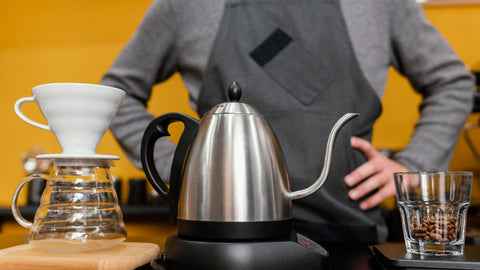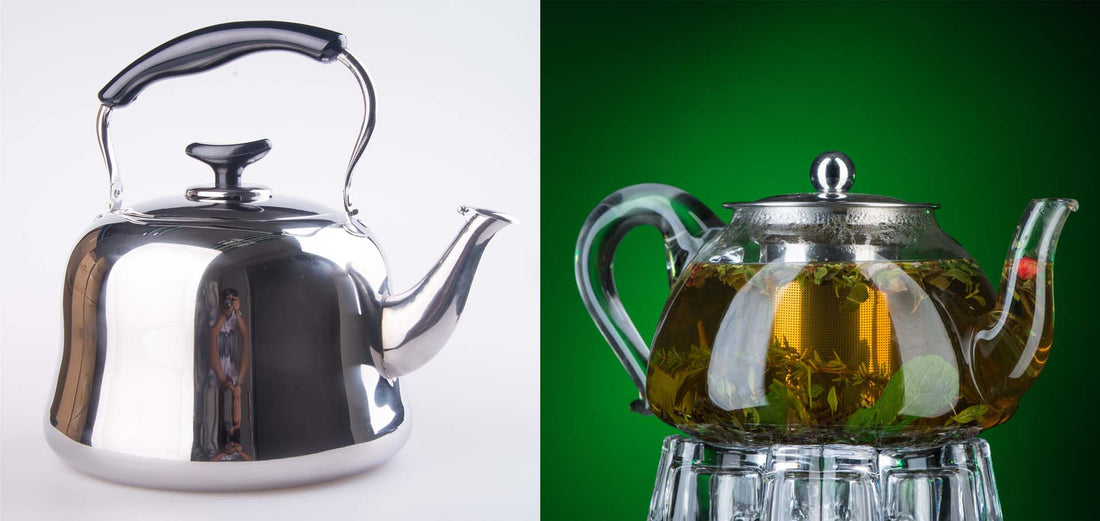Glass tea kettles provide an aesthetic appeal and chemical-free brewing. While stainless steel kettles offer durability and better heat retention. Both materials have distinct advantages for tea enthusiasts. Choosing the right tea kettle can enhance your brewing experience, and today.
Glass kettles serve as a visually pleasing option, allowing you to watch the tea as it steeps. Their non-reactive nature ensures that there are no unwanted flavors in your tea.
Stainless steel kettles are known for their robust construction and ability to keep water hot for longer periods. They are also generally more resistant to drops and dings compared to their glass counterparts.
Each material caters to different needs, be it the purity of taste with glass or the efficiency of heat with stainless steel, making the choice ultimately a personal preference based on one's tea brewing priorities.

Glass Tea Kettles
Glass Tea Kettles shine brightly in modern kitchens. They blend design and function effortlessly. A see-through body lets you watch your tea as it brews. Both beauty and brewing come together with glass tea kettles. Let's dive into the pros and cons.
Pros of Glass Tea Kettles
- Visual Appeal: The clear glass gives a sleek look. You see the tea's color change.
- Healthier Choice: Glass does not leach chemicals into water. It's the purest way to boil.
- Easy to Clean: Stains and build-up are easy to spot and wipe away. Your kettle stays shiny.
- Flavor Keeper: Unlike metals, glass doesn't alter the taste of your tea. Expect consistent flavor.
- Temperature Resistant: High-quality glass withstands sudden temperature changes. It's designed to last.
Cons of Glass Tea Kettles
- Frailty: Glass can break. Handle with care to avoid drops and bumps.
- Heat Retention: Glass cools down faster. Your tea may not stay warm as long as with metal kettles.
- Price Tag: High-quality glass kettles can come with a higher cost. Investing in durability matters.
- Weight: Glass can be heavier. This may not suit all users, especially with full capacity.

Stainless Steel Tea Kettles
Stainless steel tea kettles shine in modern kitchens. Durable and sleek, they match with other appliances. The material excels in safety, speed, and usability.
Pros of Stainless Steel Tea Kettles
- Long-lasting: Resists rust, corrosion, and stains.
- Quick heating: Warms up faster, saving time.
- Stylish: Modern look fits any kitchen decor.
- Easy cleaning: Simple wash keeps it shiny.
- Low maintenance: No special treatment needed.
Cons of Stainless Steel Tea Kettles
- Heavier: Bulkier than glass when full.
- Heat conduction: Handles may get hot.
- Limited visibility: Can't see inside while brewing.
- Flavor retention: May hold onto flavors with improper care.
Comparison Between Glass And Stainless Steel Tea Kettle
The teapot is a home staple, a friend to every tea lover. When choosing a teapot, many find themselves at a crossroads. Should they choose elegant glass or sturdy stainless steel? Each material boasts unique attributes and benefits.
Let's brew a comparison to see which pot truly shines.
Durability
Stainless steel teapots win when it comes to toughness. Resistant to dents and drops, they're ideal for frequent use. Longevity is their game, withstands years of tea parties.
In contrast, glass teapots may be fragile. A hard knock can lead to chips or cracks. But with careful handling, they too can last.
Aesthetics
The beauty of a glass teapot lies in its clarity. Tea lovers can admire the color and dance of leaves as they steep. It's a serene ritual for the eyes.
Steel teapots, however, shine with elegance. Their sleek design adds a modern touch to any kitchen. Both options suggest flair and sophistication in their own way.
Heat Retention
Stainless steel is a champion of keeping tea hot. Its material holds the heat well, ensuring a warm sip every time.
Glass may lose heat a bit quicker, making it perfect for those who drink their tea swiftly. But, it's also great for those favoring gentler brews.
Is A Glass Tea Kettle Safe To Use?
Yes, a glass tea kettle is safe to use as long as it is made from high-quality, heat-resistant borosilicate glass. This type of glass is specifically designed to withstand high temperatures and is less likely to shatter or break when exposed to heat, making it a safe choice for boiling water.
Can I Use A Glass Or Stainless Steel Tea Kettle On A Gas Stove?
Both glass and stainless steel tea kettles are suitable for use on a gas stove. However, it's important to check the specific instructions provided by the manufacturer to ensure that the kettle is compatible with gas stoves and to prevent any potential damage to the kettle or the stove.
Frequently Asked Questions
Is It Better To Boil Water In Glass Or Stainless Steel?
Boiling water in stainless steel is often preferred due to its durability and better heat conduction compared to glass.
Is A Glass Kettle Healthier Than Stainless Steel?
Both glass and stainless steel kettles are considered healthy options as they do not leach chemicals into the water. Personal preference often dictates the choice.
What Is The Best Material For A Tea Kettle?
Stainless steel is the best material for a tea kettle due to its durability, corrosion resistance, and ease of cleaning. It also efficiently conducts heat, making it a practical choice for frequent use.
What Is The Healthiest Type Of Tea Kettle?
The healthiest type of tea kettle is typically made from stainless steel or glass, as they do not leach chemicals and are durable.
Conclusion
Selecting the right tea kettle boils down to personal preferences and lifestyle needs.
Glass kettles offer elegance and chemical-free clarity, ideal for flavor purists. Stainless steel options champion durability and swift heat conductivity, catering to pragmatic users.
Your perfect brew awaits behind your choice of aesthetics and functionality – choose wisely and savor each sip.

